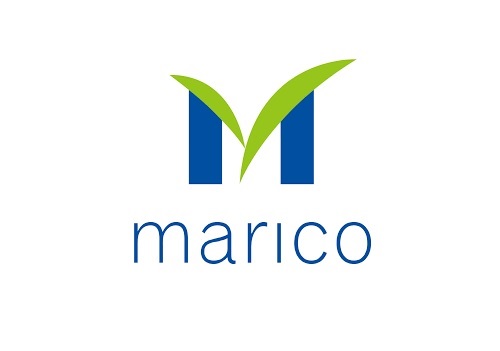Crudeoil trading range for the day is 5953-6169 - Kedia Advisory

Gold
Gold prices rose by 0.11% to settle at 78,507 as political uncertainty surrounding the U.S. presidential election increased demand for gold as a hedge against inflation risks, especially as speculation around potential inflationary policies gained traction. Investor interest in gold was also fueled by anticipation of the Federal Reserve’s monetary policy announcement, with markets widely expecting a modest 25 basis point rate cut following a larger half-point reduction in September. Additionally, weaker-than-expected nonfarm payroll data, with only a 12,000 rise in October against market expectations of 113,000, along with lower-than-anticipated GDP growth of 2.8% in Q3, signaled a cooling in the U.S. economy, potentially paving the way for extended rate cuts into 2025. On the demand side, India's gold market witnessed strong festival purchases, though high prices subdued volume. Dealers in India moved from a $1 premium on Dhanteras to a $5 discount, reflecting fluctuating demand. Meanwhile, Singapore saw a range from $0.80 discount to a $2.20 premium, and China had discounts of $11-$14, while Japan had a minor discount/premium range. The World Gold Council (WGC) reported stable global gold demand, excluding OTC trading, at 1,176.5 metric tons in Q3, with increased ETF inflows of 95 tons but a 12% dip in jewelry demand. Technically, the gold market is under short covering, with open interest dropping by 5.97% to 12,354 as prices climbed 85 rupees. Gold finds support at 78,235, with further testing likely around 77,965 if breached. On the upside, resistance is pegged at 78,730, and a break above this level could drive prices to 78,955, suggesting potential for further gains in the near term if resistance levels are surpassed.
Trading Ideas:
* Gold trading range for the day is 77965-78955.
* Gold steadied as uncertainty surrounding the election has recently boosted prices
* Fed is widely anticipated to implement a modest 25 bps interest rate cut, following a significant half-percentage point reduction in September.
* Nonfarm payrolls rose by 12,000 in October, well below market expectations of 113,000
Silver
Silver prices rose by 0.39% to settle at 94,648, as caution set in ahead of the U.S. presidential election and an anticipated Federal Reserve decision on interest rates. The U.S. labor market report showed a significant slowdown in job growth, with only 12,000 jobs added in October versus the expected 113,000. This underperformance, impacted by hurricanes and Boeing strikes, has revived the possibility of accelerated interest rate cuts. While a 25 bps rate cut is expected soon, weak economic data may push the Fed to consider more aggressive cuts. Inflation data in the U.S. exceeded expectations, while jobless claims dropped, indicating ongoing labor market strength. Yields on 10-year U.S. Treasuries also reached highs last seen in early July, reflecting investor caution as a tighter interest-rate policy could weigh on precious metals. Additionally, U.S. GDP grew at an annualized rate of 2.8% in Q3, slightly below the forecast but showing strong consumer spending, further supporting the view of a resilient economy despite restrictive rates. India’s silver imports are projected to nearly double this year, driven by high demand from the solar panel and electronics sectors and investor interest. India, the world’s largest silver consumer, has imported 4,554 metric tons in the first half of 2024, a stark increase from last year's 3,625 tons. Rising imports highlight robust industrial demand as buyers build inventories to hedge against future price increases. On the technical side, silver is in a short-covering phase, with open interest dropping by -3.99% to 23,260 contracts while prices rose by 364 rupees. Support is currently at 93,950, with potential to test 93,250 if this level breaks. Resistance stands at 95,340, with a further push possibly driving prices to 96,030.
Trading Ideas:
* Silver trading range for the day is 93250-96030.
* Silver steadied as investor caution prevailed ahead of the U.S. presidential election and looming Fed interest rates decision.
* The US economy added only 12K jobs in October, compared to market expectations of 113K
* US inflation data exceeded expectations and jobless claims dropped, pointing to continued labor market strength.
Crude oil
Crude oil prices rose by 0.5% to settle at 6,054 as OPEC+ announced an extension of its current output cut of 2.2 million barrels per day (bpd) through December, postponing a planned production increase of 180,000 bpd. The decision was made in response to declining prices and weak demand. Additionally, geopolitical concerns, particularly around potential tensions between Iran and Israel, have fueled further market anxiety. The U.S. presidential election, with a tight race between Kamala Harris and Donald Trump, and expectations of a 25 bps rate cut by the Federal Reserve on Thursday have also added to market volatility. In China, the National People’s Congress is meeting to consider new stimulus measures aimed at supporting a slowing economy, particularly focusing on local government debt. Meanwhile, U.S. oil production hit a record high of 13.4 million bpd in August, led by increases in key states such as Texas and New Mexico, according to the U.S. Energy Information Administration (EIA). However, crude inventories in the U.S. dropped by 0.515 million barrels in the week ended October 25, reversing part of the previous week’s substantial build-up. Gasoline stocks also fell sharply, while crude stocks at the Cushing hub rose by 0.681 million barrels. The EIA has adjusted its global and U.S. oil demand forecasts downward, citing economic weakness in China and North America, with demand expected to reach 104.3 million bpd globally next year, about 300,000 bpd below prior estimates. Technically, the crude oil market is under fresh buying pressure, with open interest rising by 0.39% to 13,254 contracts. Crude oil finds support at 6,003, and a break below could lead to 5,953. On the upside, resistance is at 6,111, with potential for prices to reach 6,169 if this level is surpassed.
Trading Ideas:
* Crudeoil trading range for the day is 5953-6169.
* Crude oil gains fueled by OPEC+ postponing its planned production increase for December.
* The group announced it would extend its current output cut of 2.2 mbpd into December.
* Money managers cut their net long U.S. crude futures and options positions – CFTC
Natural gas
Natural gas prices declined by 3.25% to settle at 226.1, influenced by projections of mild weather across the U.S. through late November, which is expected to reduce heating demand and support storage builds. The NYMEX futures market also saw rising interest, with open interest reaching a record 1.767 million contracts on November 1. Gas production in the Lower 48 U.S. states averaged 101.7 bcfd in October, down slightly from September's 101.8 bcfd. Although daily output dropped by approximately 2.3 bcfd over the past three days, LSEG forecasts an increase in gas demand, including exports, from 99.5 bcfd this week to 100.9 bcfd next week as seasonal cooler temperatures set in. The U.S. EIA latest Short-Term Energy Outlook projects a minor decrease in natural gas production in 2024, from 103.8 bcfd in 2023 to 103.5 bcfd. The forecast also indicates rising demand, expecting domestic gas consumption to reach a record 90.1 bcfd in 2024, driven by industrial and residential needs. EIA projects LNG exports will grow from 11.9 bcfd in 2023 to 12.1 bcfd in 2024, and further to 13.8 bcfd in 2025, bolstering demand for U.S. natural gas in international markets. On the supply side, U.S. utilities added 78 billion cubic feet of natural gas into storage for the week ending October 25, aligning with seasonal expectations and bringing total storage 2.8% above last year and 4.8% above the five-year average. Technically, the market is experiencing fresh selling with open interest rising by 13.35% to 22,573 contracts. Support for natural gas is currently at 221.8, with a potential test at 217.4 if it breaks below. On the upside, resistance is anticipated at 234, and a move above this could lead to a test of 241.8.
Trading Ideas:
* Naturalgas trading range for the day is 217.4-241.8.
* Natural gas dropped due to expectations of mild weather through late November
* U.S. EIA said utilities added 78 bcf of gas into storage during the week ended Oct. 25.
* Average gas output in the Lower 48 U.S. states has eased to 101.7 bcfd so far in October, down from 101.8 bcfd in September.
Copper
Copper prices rose by 0.8% to settle at 859.55, driven by a weaker dollar and renewed optimism regarding stimulus from the Chinese government. China's October manufacturing data revealed a return to expansion for the first time in six months, with stronger export orders, signaling that recent economic support measures are starting to impact the economy positively. Market sentiment is further buoyed by the anticipation that China’s top legislative body, meeting from November 4-8, may introduce additional economic support measures. Despite earlier disappointment over the scale of China’s stimulus, the latest data has helped renew confidence in copper demand from the world’s largest consumer. In supply news, Chile’s state-owned miner Codelco reported a 4.9% year-on-year decrease in copper output for January through September, highlighting ongoing supply challenges in one of the top-producing nations. Meanwhile, the global refined copper market posted a 54,000 metric ton surplus in August, slightly down from July's surplus, as per the International Copper Study Group (ICSG). Over the first eight months of the year, the surplus has increased significantly, reaching 535,000 metric tons, compared to 75,000 tons a year ago. This reflects slower demand growth relative to supply increases. China's imports of unwrought copper increased by 15.4% in September compared to August, reaching 479,000 metric tons, supported by seasonal demand and a positive consumption outlook. On the technical side, copper is in fresh buying territory with open interest up by 2.26% to 7,832 contracts. Support is seen at 855.7, and a break below could lead to 851.7. Resistance is positioned at 862.5, with potential for prices to reach 865.3 if this level is breached, suggesting potential for further upward momentum.
Trading Ideas:
* Copper trading range for the day is 851.7-865.3.
* Copper gains amid a pullback in the dollar and greater confidence in stimulus by the Chinese government.
* Copper output from Chile's Codelco down nearly 5% in January – September
* China's top legislative body will meet from Nov. 4-8, where market participants hope Beijing will announce more measures for its economy.
Zinc
Zinc prices rose by 1.57% to settle at 287.85, driven by a supply squeeze as smelters scaled back refined metal production due to raw material shortages. The London Metal Exchange (LME) zinc stocks have increased for three consecutive days, alleviating some concerns of immediate shortages. This uptick in inventory is reflected in the narrowing premium for the cash contract over the three-month zinc futures, which dropped to $18 per ton from last week’s peak of over $58. China’s September industrial profits declined steeply, attributed to weak demand and lower producer prices, adding to the global economic pressures facing zinc. Meanwhile, Russia’s Ozernoye mining project is facing production uncertainty due to sanctions-related equipment procurement challenges. Initially projected to contribute 320,000 metric tons in 2025, representing approximately 2.5% of global supply, this output is now uncertain, potentially impacting supply forecasts for next year. The ILZSG forecasted an 8.9% growth in new mining zinc supply outside China for 2025, partly driven by Ozernoye's production, which may need revision if these challenges persist. The global zinc market has tightened, with the deficit widening to 66,300 metric tons in August from 51,000 in July. China’s refined zinc production rose by 2% month-on-month in September but fell over 8% year-on-year. This production increase is primarily due to post-maintenance recovery in several provinces. The increase in October is expected to be modest, with major growth from smelters in Inner Mongolia and Shaanxi. Technically, zinc is experiencing short covering, with open interest falling by 4.49% to 2,896 contracts while prices rose by 4.45 rupees. Zinc finds support at 285.2, with a test of 282.5 possible below this level, while resistance is seen at 289.3, with potential to test 290.7 above.
Trading Ideas:
* Zinc trading range for the day is 282.5-290.7.
* Zinc prices gained as a raw materials squeeze forces smelters to reduce production
* Chinese data suggesting poor demand prospects added to disappointment with economic stimulus measures
* China’s industrial profits plunged in September, registering the steepest monthly decline of the year, owing to factors including weak demand
Aluminium
Aluminium prices rose by 1.04% to settle at 243.4, fueled by positive manufacturing data from China, which raised expectations for stronger demand in the world’s largest consumer of the metal. A private survey showed that China’s factory activity expanded in October, reflecting the impact of recent stimulus measures aimed at boosting economic growth. Supply concerns also supported prices, as alumina shortages triggered systematic buying from funds. Additionally, exports of bauxite from Guinea Alumina Corporation (GAC) were halted, disrupting supply from one of the world’s top alumina sources. LME data indicated one large futures position with over 40% open interest in buying aluminium in December, alongside a 30-39% open interest position to sell in January, suggesting significant speculative activity. Reflecting positive market sentiment, Goldman Sachs raised its 2025 aluminium price forecast to $2,700 per ton, citing China’s potential for increased demand due to economic support measures. On the production side, global primary aluminium output rose 1.3% year-on-year in September, reaching 6.007 million tonnes, according to the IAI. Improved hydropower availability in China’s Yunnan province, due to favorable rainfall, helped producers maintain strong operational rates. China’s September aluminium output reached 3.65 million metric tons, up 1.2% year-on-year, with daily production averaging 121,667 tons, higher than August’s daily output. Chinese producers also enjoyed profitability, with state-backed research house Antaike estimating average industry profit at 2,379 yuan ($334.04) per ton in September. Technically, aluminium is under fresh buying pressure as open interest increased by 2.38% to 3,697 contracts. Support is at 241.7, with further testing possible at 240 if breached. Resistance is at 244.5, and a break above could lead prices to test 245.6, indicating potential for additional upward movement if bullish momentum continues
Trading Ideas:
* Aluminium trading range for the day is 240-245.6.
* Aluminium prices gained as strong manufacturing activity data bolstered demand expectations in China
* Support also seen amid news of alumina shortages triggered systematic buying from funds.
* Manufacturing activity in China expanded in October for the first time in six months
Cotton candy
Cottoncandy prices declined by 0.66% to close at 55,470 due to weak demand and payment issues in the yarn market. However, the downside was limited by a reduced cotton production forecast for India. The USDA recently lowered India’s cotton production estimate for the 2024-25 season to 30.72 million bales, with ending stocks reduced to 12.38 million bales, citing crop damage from heavy rains and pest problems. India's cotton acreage also fell by around 9% this season to 11.29 million hectares, compared to 12.69 million hectares last year, as farmers in Gujarat opted for groundnuts over cotton for better returns. India's cotton production is expected to drop by 7.4% year-over-year, leading to reduced exports and an anticipated increase in imports from 1.75 million to 2.5 million bales, supporting global cotton prices. In the U.S., cotton production was revised down by 300,000 bales to 14.2 million due to Hurricane Helene’s impact. U.S. exports are expected to drop by 300,000 bales to 11.5 million, while ending stocks increased to 4.1 million bales. Globally, cotton production was adjusted upwards by over 200,000 bales due to increased output from China, Brazil, and Argentina, though world trade projections dropped by over 500,000 bales due to reduced demand from China. Technically, Cottoncandy is facing fresh selling pressure, with open interest rising by 2.5% to 164 contracts while prices dropped by 370 rupees. Current support is at 54,300, with potential to test 53,140 if this level breaks. Resistance is seen at 56,210, and a move above this could lead prices to test 56,960.
Trading Ideas:
* Cottoncandy trading range for the day is 53140-56960.
* Cotton dropped as yarn markets face weak demand and payment constraints.
* India's cotton production in 2024/25 is likely to fall by 7.4% from a year ago to 30.2 million bales.
* Cotton production is projected to increase in China, Brazil, and Argentina, more than offsetting reductions in the US and Spain.
* In the global 2024/25 cotton balance sheet, beginning stocks, production and consumption are increased.
Turmeric
Turmeric prices increased by 0.86% to settle at 12,842 amid reports of potential crop damage from heavy rains, raising concerns that losses might be more severe than initially estimated. However, gains were limited due to lower demand and increased arrivals. Adding to the pressure, turmeric acreage for the upcoming season is estimated to be 30-35% higher than last year, which points toward a rise in production. While recent weather, including dry conditions followed by light rains, has been favorable for crop growth, heavy rainfall in Vidarbha (20 mm) and Telangana (18 mm) regions has impacted certain areas. With five months remaining until the harvest season, ongoing supply constraints and unpredictable weather conditions could drive turmeric prices higher in the coming weeks. Internationally, dry weather in Indonesia has accelerated turmeric harvesting, adding pressure on prices. Domestically, sowing on the Erode line has doubled from last year, and major turmeric-growing states like Maharashtra, Telangana, and Andhra Pradesh report a 30-35% increase in sowing. Estimated production for 2024 stands at 45-50 lakh bags, while this season’s crop may reach 70-75 lakh bags, with a zero carryover stock projected, limiting availability for 2025. In terms of trade, turmeric exports from April to August 2024 dropped by 6.46% year-on-year, while imports surged by 340.21% due to increased demand. Spot prices in Nizamabad closed at 13,535.85 rupees, down by -0.22%. Technically, turmeric is experiencing short covering, with open interest down by 1.15% to 12,065 contracts while prices rose by 110 rupees. Support is at 12,720, and a drop below could test 12,598. Resistance is now seen at 12,994, with potential to reach 13,146 if surpassed, indicating potential for continued upward movement.
Trading Ideas:
* Turmeric trading range for the day is 12598-13146.
* Turmeric gains amid reports of crop damage due to heavy rains.
* However upside seen limited due to lower demand amid a rise in arrivals.
* Recent weather conditions, which include dry weather followed by light rains, are benefiting crop growth.
* In Nizamabad, a major spot market, the price ended at 13535.85 Rupees dropped by -0.22 percent.
Jeera
Jeera prices rose by 0.25% to close at 23,885, supported by short-covering after recent declines amid increased arrivals. Around 15,000 bags of jeera are arriving daily in Unjha, with farmers estimated to still hold about 35% of the current season's stock. The carryover stock at the beginning of the new season is expected to be around 20 lakh bags. Market sentiment is optimistic, with expectations that exports will pick up after Diwali, especially during the November-December period. Additionally, a 10% decrease in overall production, along with a 10-15% reduction in Rajasthan’s cumin acreage, is likely to support prices. India currently offers the world’s cheapest cumin, priced at around $3,050 per tonne, which is $200-$250 lower than Chinese cumin, making India the preferred sourcing destination for several countries, including China. Tensions in the Middle East have also contributed positively to Indian cumin exports from Gujarat, as traditional cumin producers like Syria, Iran, and Turkey have been impacted. Exports during July to September surged 128% year-over-year to 52,022 metric tonnes, driven by strong demand from Europe and the Middle East ahead of festive seasons. Data from the Federation of Indian Spice Stakeholders (FISS) highlights that exports for the April-August period in 2024 rose by 61.44% to 103,614.46 tonnes compared to the same period in 2023. Technically, jeera is under short covering with a 1.89% decline in open interest to 1,557 contracts while prices increased by 60 rupees. Jeera has support at 23,700, with the possibility of testing 23,520 if this level is breached. On the upside, resistance is observed at 24,020, with a move above potentially leading prices to test 24,160.
Trading Ideas:
* Jeera trading range for the day is 23520-24160.
* Jeera gains on short covering after prices dropped as arrival has increased.
* There is a possibility of 25 percent reduction in cumin sowing in Gujarat
* Carryover stock of 20 lakh bags of cumin is estimated in the new season
* In Unjha, a major spot market, the price ended at 24992.9 Rupees dropped by -0.31 percent.
Views express by all participants are for information & academic purpose only. Kindly read disclaimer before referring below views










Tag News

Quote on Gold 23rd December 2025 by Jateen Trivedi, VP Research Analyst - Commodity and Curr...













